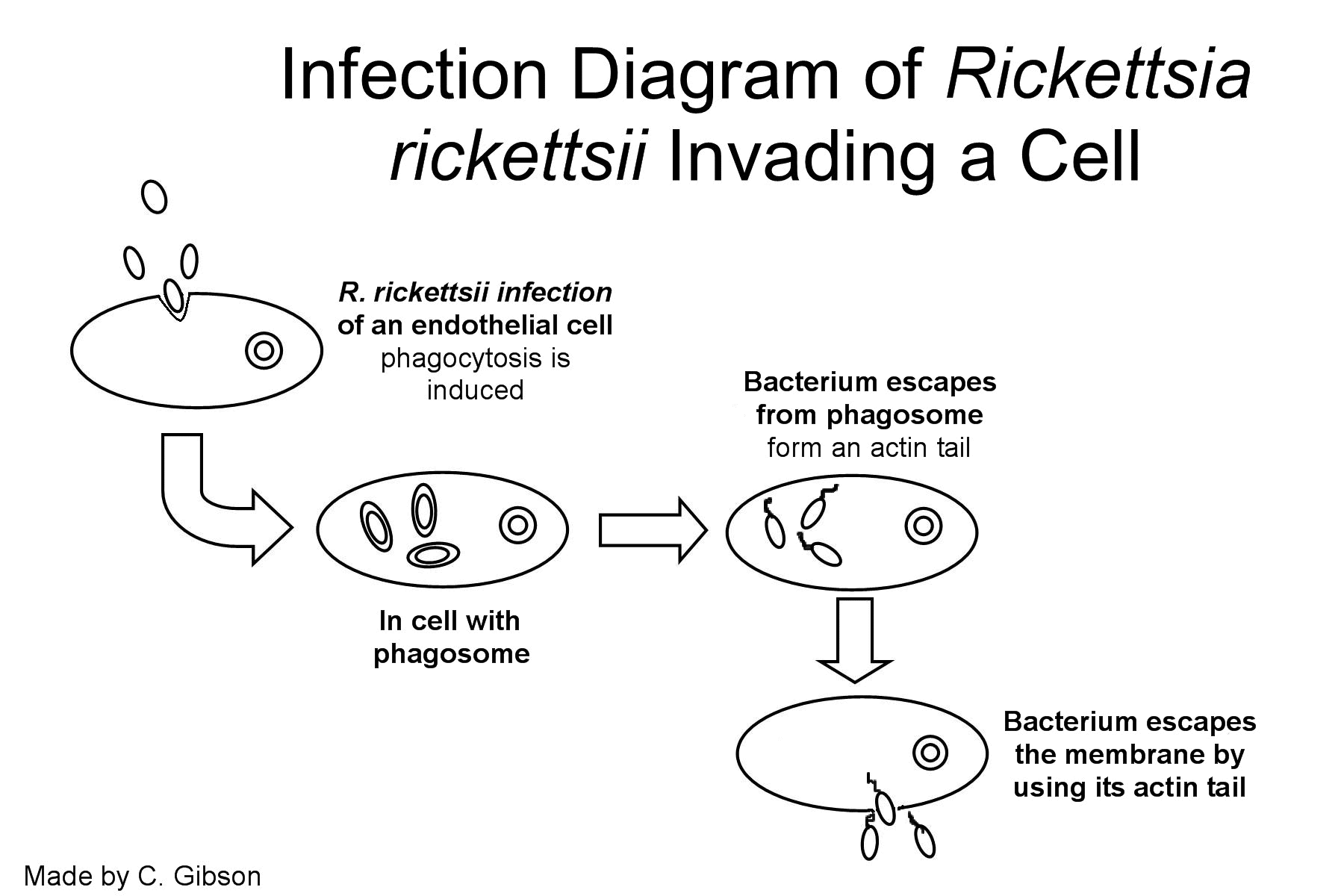Habitat- Inside the Host Cell
States in which Rickettsia rickettsii inhabit:
Rickettsia rickettsii
reside in
host cells and it takes two different hosts to complete its
life cycle. However, there are a few states in
which Rickettsia rickettsii are more common. Rickettsia rickettsii
causes
Rocky Mountain
spotted fever which has been reported mainly in the south-Atlantic
region of the
* The states that have the highest cases of Rocky Mountain
spotted fever reported
The number of reported cases of Rocky Mountain spotted fever in the United States.
So, if you are from the other states that were not listed that does not mean you do not have to worry about Rocky Mountain Spotted Fever, because you never know if Rickettsia rickettsii will move locations due to maybe someone bringing a tick home with them from vacation. Also, just because you may not have to worry about Rocky Mountain spotted fever you do have to worry about other tick related diseases like Lyme's disease, Q fever, Tularemia, and many more.
Habitat in the Host Cell- Rickettsia rickettsii is a parasite of eukaryotic cells and needs two hosts, normally an arthropod vector (American dog tick and Rocky Mountain wood tick) and a mammal host (any mammalian can pick up the bacterium Rickettsia rickettsii). When they invade the cells they normally reside in the cytoplasm or nucleus.

-
How R. rickettsii gets into the Host
Rickettsia rickettsii gets into a human's bloodstream by a tick bite or through a cut in the skin that came into contact with feces of the tick. Once it is in the bloodstream it infects the endothelium which is the thin layer of cells that line the interior surface of blood vessels. -
How R. rickettsii gets into the Host Cells
When R. rickettsii connects to the host’s cell membrane it is phagocytosed by the host cell. Once phagocytosed, R. rickettsii has to get rid of the phagosome membrane to enter the cytoplasm. -
How R. rickettsii Moves in the Host Cell and Leave without Damage
R. rickettsii, a member of the Spotted fever group, does not have to have a lot of bacterial cells in the host cell to infect it. R. rickettsii also does not lyse the host cell; they leave the cell by provoking polymerization of the host cell and derive an actin tail. This actin tail allows R. rickettsii to push through the cytoplasm and into the membrane where they can escape from the cell without destroying the host cell. The only damage that can be observed is the same damage that is caused when there is too much water within the cell.
Now Rickettsia rickettsii is in the cell, what happens next?

